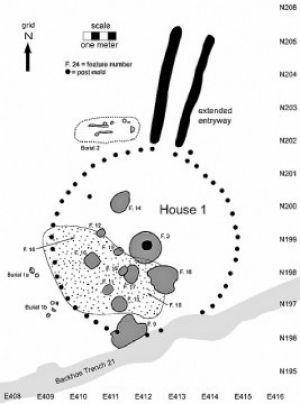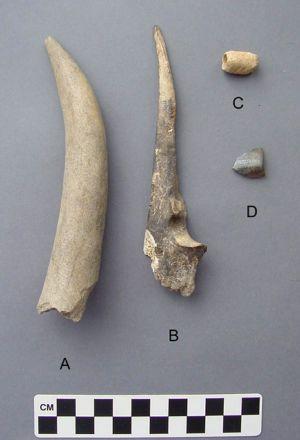PART.2
The dispersed village uncovered by Parsons and his team was located in what is now known as Kelsey Creek Valley, near where the Lake Gilmer dam was constructed. The building of the lake was the reason for the archaeological survey, which Parsons was involved in from the start.

“The sites we dug were all probably part of a large extended dispersed village where people would live close enough to be in communication but scattered out up and down what’s now called Kelsey Creek,” he said.
The crews dug at several sites but two – the Kelsey Creek Dam site and the Rookery Ridge site – were the most productive, Parsons said.
Some of the artifacts found were unique.
“There were lots and lots of details, some having to do with unusual artifacts we found,” he said. “A few burials were found incidentally but the largest burial ground was looted before our project began. From the holes it appeared 20-30 graves were robbed maybe around the 1970s.”
Parsons said the main items the looters were looking for was burial pottery.

The Caddos’ extended village included farmsteads where one or two families might live, as well as larger hamlets made up of several houses. The houses were circular beehive-shaped structures, he said, made by setting tall slender poles in a circle. The poles were bent together and secured at the top to create a framework that was then covered in thatch. Sometimes they applied clay mud over the thatch to make it more air-tight.
“They were very nice houses and some were quite large,” Parsons said. “They hunted fairly extensively – we found lots of deer bones and other species of animals, but they also ate corn and were pretty sedentary farmers.”
Caddos were renowned as diplomats, he said.
“They were famous for their diplomacy, having served as peacemakers among other groups in the area – such as Comanches to the west and Tonkawas in Central Texas.”
Some of the unusual items found included pottery clay balls, Parsons said. Clay was rolled into a rough ball and fired. They also found cigar-shaped lumps of clay the Caddos apparently squeezed in their hands, leaving the marks of fingers.
“We don’t know what they were,” he said. “Perhaps for children – one appeared to be a crude figurine with dots for eyes. I don’t know of anywhere else those have been reported.”
After all the years of poring over the artifacts, Parsons has entered his final phase, preparing items for storage. The items taken from burial sites will be returned to the Caddo Nation in Binger, Okla. The remainder will be stored for future generations at Stephen F. Austin State University.
“That’s where the City of Gilmer chose to send them,” Parsons said.
But first, the hundreds of pages of field notes taken years ago may have to be scanned and copied before storage because the archaeologist discovered some were not taken on the correct paper allowed for curation.
“For curation, all records have to be on acid-free paper,” he said. “Some early work done there was recorded on normal paper. Now, I must go through the records and check page by page to see if it is acid or not.”
Then, Parsons will scan any original that was made on acidic paper and print it onto acid-free paper.
“I’m basically working for free now,” said Parsons, whose grant with the Texas Historical Commission expired years ago. “But that’s not unusual for an archaeologist. We have to finish what we started. The artifacts themselves are pretty much ready to go. It’s not uncommon for archaeologists to have projects they didn’t finish during the grant period – projects they had to finish on their own.”
Parsons’ academic publication on the project, “Mitigation Phase Archaeological Investigations at Lake Gilmer, Upshur County, Texas” with nearly 200 illustrations and tables, is at the Texas Historical Commission awaiting publication, he said.